Air Quality Research Milestones
On this page, view by decade:
EPA's air quality research has informed and enabled the nation’s efforts to improve air quality significantly. Here are some of the most important achievements.
2020s
2024-Celebrated the 25th Anniversary of CMAQ
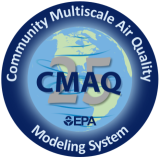
The CMAQ tool is an EPA model that simulates how pollutants move and change in the air, offering reliable estimates of air quality issues like ozone and particulate matter data. Throughout 2024 EPA celebrated that CMAQ has continued to evolve and improved capabilities for 25 years, and released version 5.5 in October 2024.
2024-ISA for the NAAQS of Lead
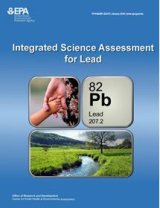
EPA finalized the Integrated Science Assessment (ISA) for Lead. This assessment represents a concise synthesis and evaluation of the most policy-relevant science and will provide the scientific basis for EPA’s review of the National Ambient Air Quality Standards (NAAQS) for Lead (Pb).
2024-Research on PFAS Air Emissions
EPA researchers worked to expand research on PFAS air emissions with a review on potential treatment methods for destruction of PFAS, developing new methods for studying and measuring PFAS and conducting measurements in the field.
Review of Potential Treatment Methods for PFAS Destruction
New Study for Destruction Methods
Measuring PFAS Air Emissions in the Field
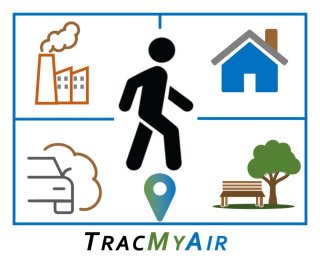
2024-TracMyAir Web Application
In 2024, EPA released the TracMyAir web app for researchers, which predicts near real-time individual air pollution exposure and dose for fine particulate matter (PM2.5) and ozone. TracMyAir runs two models that consider the potentially lower amount of outdoor air pollution present indoors, which depends on daily weather conditions, building characteristics, and type of air pollutant (i.e., PM2.5, ozone).
TracMyAir Web Application for Researchers
2024-Measuring Ethylene Oxide (EtO) in Air Emissions
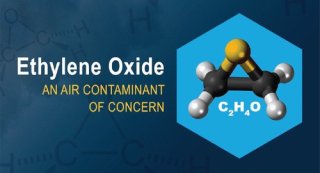
Ethylene oxide (EtO) is a colorless, flammable gas used in sterilization and manufacturing, now classified by the US EPA as "carcinogenic to humans" due to it having higher toxicity than previously understood. EPA scientists worked to improve measurment methods of EtO emissions and atmospheric levels.
Ethylene Oxide: An Air Contaminant of Concern
Measuring Ethylene Oxide in Mobile Source Exhaust
2024-Impacts of Neighborhood Characteristics on Air Pollution Health Effects
EPA scientists have been reviewing detailed health records to investigate how characteristics of surroundings impact a response to air pollution exposure.
EPA Review of Air Pollutants and Birth Outcomes
Investigation on Air Pollution and Dementia Risk
2023-EPA Collaboration to Validate Satellite Air Quality Measurements

EPA scientists with NASA, NOAA, and state partners took air quality measurements using ground-based spectrometers to validate the first observations from NASA's Tropospheric Emissions: Monitoring of Pollution (TEMPO) satellite mission.
EPA Collaboration to Validate Satellite Air Quality Measurements
2023-New Air Sensor Loan Program Collaborations

EPA has established air sensor loan programs independently and through collaborations with libraries, tribes, museums, and others to enable the public to learn about air quality in their communities. These programs bring air sensor technology to the public for supplemental monitoring and educational purposes.
Promoting Air Quality Education by Bringing Sensors to You!
2023-Research on DIY Air Cleaners to Reduce Wildfire Smoke Indoors

EPA conducted research to evaluate DIY air cleaners to answer questions from EPA partners and the public about their effectiveness and safety. This research is one part of a multi-faceted ASPIRE study.
Research on DIY Air Cleaners to Reduce Wildfire Smoke Indoors
Wildfire Study to Advance Science Partnerships for Indoor Reductions of Smoke Exposures

2023-New Indicators in EPA's Report on the Environment
EPA’s ROE updated 38 of its indicators to include new data. This includes five under the Human Health and Exposure theme, four under the Land theme, and 12 each under the Air and Water themes of the ROE.
EPA’s Report on the Environment
2022-EPA Researchers Make Significant Updates to the Air Sensors Guidebook

EPA air researchers published the original Air Sensor Guidebook in 2014 to help those interested in using sensors to collect air quality measurements and interpret sensor data. In 2022, a refreshed version was released, The Enhanced Air Sensor Guidebook, includes updated content and new topics that incorporate best practices, current knowledge, and recommendations on sensors.
How to Use Air Sensors: Air Sensor Guidebook
Science Matters Newsletter: EPA Researchers Update the Air Sensor Guidebook
2022-EPA Researchers Develop New Air Monitoring Technology to Understand Leaks and Irregular Emissions from Sources

EPA researchers have conducted critical research on a form of air pollution called “fugitive emissions,” which are difficult to measure and model because they escape through leaks, industrial processes, and other industrial activities, making them hard to track. To help monitor fugitive emissions, EPA’s Next Generation Emission Measurement team developed a prototype fenceline sensor pod (SPod) and demonstrated the technology in an industrial district known as Rubbertown in Louisville, Kentucky.
2022-EPA Research Improves Air Quality Information for the Public on the AirNow Fire and Smoke Map
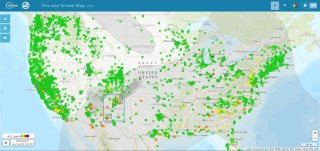
Air sensors have become increasingly popular for measuring air pollution across the United States, but these sensors can often incorrectly estimate pollutant levels compared to regulatory-grade monitors. To address this issue, EPA researchers developed a mathematical equation, called a “correction equation,” to adjust the air sensor data, making the data more accurate and comparable to the regulatory network.
2022- EPA Releases Supplement to the Integrated Science Assessment (ISA) for Particulate Matter

The supplement, along with the full ISA for Particulate Matter (PM) published in 2019, provide the scientific basis for EPA’s National Ambient Air Quality Standards for PM. The documents include evaluation and synthesis of policy-relevant scientific evidence about the relationships between PM and health effects, and the supplement thoroughly evaluates the most up-to-date science that became available after the literature cutoff date of the PM ISA, ensuring EPA has the best and latest science to inform decisions that protect our nation's air quality.
Supplement to the 2019 Integrated Science Assessment for Particulate Matter (Final Report, 2022)
2021 - Study Finds Exposure to Air Pollution Higher for People of Color

A study from EPA grantees found that people of color across the U.S. are exposed to higher levels of air pollution, regardless of region or income. The researchers conducted modeling and analyzed EPA data from the National Emissions Inventory for more than 5,000 emission source types for fine particulate matter, or PM2.5.
2021 - EPA Research Addresses Public Health Threat from Wildfire Smoke

EPA’s multi-faceted study brought together a diverse group of experts to address community health impacts from wildfire smoke. The project includes field and lab studies, a prize-based challenge to develop innovative indoor air cleaners, and an air sensor loan program for air quality advisors.
Wildfire Study to Advance Science Partnerships for Indoor Reductions of Smoke Exposures
2021 -EPA Scientists Develop Odor Reporting App

Scientists partnered with the Louisville, Kentucky Metro Air Pollution Control District to develop an odor reporting app, Odor Explore, to better understand and identify odorous air pollution emissions. A pilot project of the Odor Explore app took place in Louisville’s Rubbertown, a historic industrial area in west Louisville that faces ongoing issues with odors and air toxic emissions.
Odor Explore: A Citizen Science Project Using a Mobile App and New Measurement Approaches
2021 - EPA Launches Cleaner Indoor Air Challenge

The Challenge invited innovators to submit proposals for technologies and approaches to remove wildfire smoke from indoor air. Five challenge winners received prizes of up to $10,000 and an opportunity to submit prototypes for review.
Winners of the Cleaner Indoor Air During Wildfires Challenge
2021 - EPA Responds to Air Monitoring Needs During Wildfires

EPA launched a pilot air monitor loan program to respond to the growing threat of wildfires and harmful smoke they generate. Monitors are being loaned to state, local, and tribal air organizations to support supplemental air monitoring in areas affected by wildfire smoke.
Wildfire Smoke Air Monitoring Response Technology (WSMART) Pilot
2021 - EPA Finds VOCs in Household Products Contribute to Air Pollution

Consumer products that release volatile organic chemicals (VOCs) such as cleaning agents, personal care products, paints, and pesticides contribute to air pollution and direct inhalation exposure to VOCs. Modeling demonstrated the importance of these emissions and a method to improve their representation in the National Emissions Inventory used to implement the National Ambient Air Quality Standards.
2021 - EPA Researches Neighborhood Health Disparities

Research indicates health disparities can be influenced by the neighborhood environment. In two studies, EPA researchers found that the environment can impact how our genes work (epigenetic changes) and that these changes may reveal whether a person is more susceptible to health risks in their environment.
2021 - EPA Develops Method of Detecting PFAS in Air Emissions

EPA developed a test method to consistently measure 50 per- and polyfluorinated alkyl substances (PFAS) in the air from stationary sources. These widely used manufactured chemicals are found in the water, soil, air, and food and can be harmful to health at high levels.
Status of EPA Research and Development on PFAS
Our Current Understanding of the Human Health and Environmental Risks of PFAS
2021 - EPA Improves Smoke Sense App

The Smoke Sense crowdsourcing, citizen science research project is increasing public awareness and engagement related to wildfire smoke health risks. In response to participant and partner feedback, the Smoke Sense team released an improved user interface including a streamlined questionnaire for participants to report smoke observations and health protective behaviors.
Smoke Sense Study: A Citizen Science Project Using a Mobile App
2021 - EPA Examines Relationship Between Cardiac Events and Wildfire Smoke

EPA scientists examined the relationship between wildfire smoke exposure and out-of-hospital cardiac arrests and found that heavy smoke days increase cardiac events, particularly in communities with lower socioeconomic status. This study is part of EPA's efforts to characterize the health impacts of wildland fire and collaborate with communities to identify tools and resources they can use to protect public health during wildfire events.
2021 - EPA Offers Guidance to Reduce Indoor Wildfire Smoke in Buildings
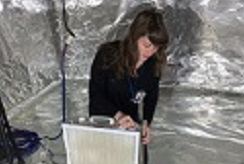
EPA scientists are serving on a committee organized by ASHRAE to develop guidelines for commercial buildings and schools to reduce smoke exposure for occupants. ASHRAE released interim guidance that recommends heating, ventilation, and air conditioning (HVAC) and other building measures to minimize smoke intrusion during wildfires and prescribed burning. A final document is expected to be completed in 2022.
Planning Framework for Protecting Commercial Building Occupants from Smoke During Wildfire Events
2020 - EPA Research Identifies Biomarker Indicating Health Outcomes in Neighborhoods Impacted by Environmental Stressors

Research shows a molecular biomarker for mortality risk increases in people living in disadvantaged neighborhoods with abandoned cars, poor streets, and non-art graffiti. The biomarker may be a possible early indicator of other environmental stressors such as air pollution.
2020 - EPA Publishes Two Reports on Air Sensor Performance Targets and Testing Protocols

Two EPA reports outline step-by-step testing protocols for ozone and PM2.5 air sensors to provide a consistent set of performance targets and testing procedures for non-regulatory, supplemental and informational monitoring that can be used by sensor developers, manufacturers and testing organizations.
Air Sensor Performance Targets and Testing Protocols
2020 - EPA Studies Ozone Measurement Methods During Smoky Conditions
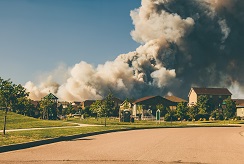
EPA and other federal partners identified issues associated with the operation of ozone monitoring methods in smoke from wildfires and prescribed burning. Results provide state and local air quality agencies with additional monitoring information to address ozone measurement challenges in areas frequently impacted by smoke.
2020 - EPA Develops Technique to Measure Greenhouse Gas Emissions from Reservoirs

EPA researchers adapted a measurement technique that is widely used for monitoring greenhouse gas emissions from terrestrial ecosystems to measure methane emissions from reservoirs. The method is improving estimates of this gas from reservoirs in the U.S. and globally.
2020 - EPA Modelers Study Airborne PFAS Emissions
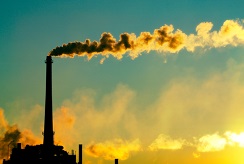
Atmospheric modelers simulated the transport and chemistry of Per- and Polyfluoroalkyl Substances (PFAS) air emission compounds from a North Carolina manufacturing facility, representing the first study of the fate of chemically resolved total PFAS air emissions from a manufacturing source.
2020 - EPA Research Improves Understanding of How Everyday Products Impact Air Quality

Through modeling, researchers found that the contribution to air pollution from Volatile Chemical Products (VCPs) in personal care products, cleaning agents, paints, adhesives, and pesticides has been underestimated. VCPs emit volatile organic chemicals that are important precursors for air pollutants such as ozone and fine particles (PM2.5).
Criteria pollutant impacts of volatile chemical products informed by near-field modeling
2020 - EPA Tests Novel Next Generation Emissions Measurement Method

EPA and the City of Louisville Metro Air Pollution Control District (LMAPCD) in Kentucky collaborated on a project in an industrial area, known as “Rubbertown,” to evaluate emerging measurement approaches for select hazardous air pollutants and volatile organic chemicals (VOCs) using EPA Method 325B.
2020 - AirNow Sensor Data Pilot Gives New Information on Wildfire Smoke
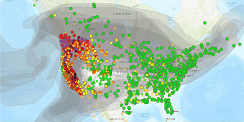
EPA researchers developed a U.S.-wide correction equation and quality control checks to make air sensor data on local air quality during wildfire and other high pollution events available on the AirNow Fire and Smoke Map.
Technical Approaches for the Sensor Data on the AirNow Fire and Smoke Map
2020 - EPA Advances Understanding of Air Quality and Cardiovascular Disease

Four key research articles offer new insights into the health effects of fine particulate matter (PM2.5) on the cardiovascular system, especially for those with heart disease.
Air Quality and Healthy Hearts Webinar Recording
EPA’s Healthy Heart Toolkit and Research
2020 - EPA Marks Five Years of Progress in Household Energy Research

Research between 2015-2020 advanced the science to characterize emissions, exposures, and related health and environmental impacts of the use of solid fuels such as wood and charcoal for cooking, heating and lighting. The research addresses the global public health and environmental impacts from these emissions.
Household Energy and Clean Cookstove Research
2010s
2019 - EPA Identifies Wildland Fire Research as a High Priority

Following earlier research to understand emissions and health impacts of wildfires and prescribed burns, EPA designates wildland fire research as a high priority and publishes a report to guide additional research on the impacts to air and water quality, health and ecosystems from larger and more intense wildfires occurring, primarily in western states.
EPA's Wildland Fire Research Framework 2019-2022
EPA's Wildland Fire Research to Protect Health and the Environment
2017 - EPA Launches Smoke Sense Project and Mobile App

EPA researchers launch a citizen science research project called Smoke Sense, along with a Smoke Sense mobile app, to advance understanding of the health impacts of wildfire smoke and provide individuals with critical information to protect their health during smoke events. The app can be used to explore current and forecast maps of air quality and learn ways to reduce exposure from smoke. It also enables people to participate in science by recording smoke experiences, health systems and actions taken to reduce smoke exposure. The research project will be used to support the development of effective strategies to communicate health risks from smoke exposure.
Smoke Sense Study: A Citizen Science Project Using a Mobile App
2017 - EPA Develops First Fenceline Monitoring Regulation

As part of the Next Generation Emissions Measurements (NGEM) initiative to reduce costs and regulatory burden through technology, EPA’s first fenceline monitoring regulation (Method 325) was developed for chemical facilities emissions. The technology supports implementation of EPA’s refinery fenceline rule. Researchers continue to advance fenceline monitoring technology with the development of prototype air measurement monitors.
Studies Advance Air Monitoring During Wildfires and Improve Forecasting of Smoke
2012 - EPA Supports the Development and Evaluation of Emerging Air Sensor Technology
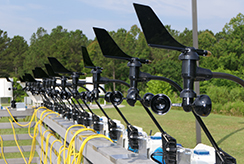
EPA scientists begin an initiative that is advancing emerging air sensor technology by conducting performance evaluations of sensors and providing best practices for effectively using sensors. These portable and lower-cost air sensors have increased in popularity with the public as a way to learn about local air quality conditions. One of the first efforts was the Village Green Project. It engaged the public in air quality with a near real-time air monitoring system built into a park bench. In 2014, the online Air Sensor Toolbox for Citizen Scientists was developed to share information with developers and users of air sensor technology.
2012 - EPA Publishes Climate Change Impacts to Watersheds
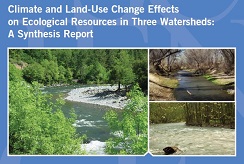
EPA publishes a report that summarizes climate change impacts to selected watersheds and recommendations for how to improve the process of conducting watershed assessments in the future.
Climate and Land-Use Change Effects on Ecological Resources in Three Watersheds: A Synthesis Report
2011 - EPA Collaborates in DISCOVER-AQ with NASA and Others
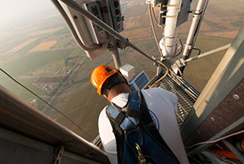
EPA collaborates in DISCOVER-AQ with NASA and others to better understand how to measure and forecast air quality globally, via satellite data from space. Ongoing studies, with support from EPA, are helping to advance measurement of air pollution using spaced-based instruments, including NASA’s upcoming Tropospheric Emissions: Monitoring Pollution (TEMPO) mission.
DISCOVER-AQ: Tracking Pollution from the Skies (and Space!)
2010 - EPA Supports Development of Clean Cookstove Technologies

EPA supports the Clean Cooking Alliance, a public-private alliance that addresses one of the greatest threats facing developing countries and their populations - extraordinarily high exposures to toxic smoke from indoor fires and inefficient cookstoves that lead to nearly two million deaths each year, primarily in young children and women. EPA scientists conducted studies to evaluate cookstoves and provided extensive data on cookstove emissions and energy efficiency to support the development of cleaner sustainable cooking technologies.
2000s
2009 - EPA Publishes Greenhouse Gases Endangerment Finding

EPA publishes a report and an accompanying synthesis article that describes the potential effects of climate change on regional air quality in the United States. These products were the culmination of nearly a decade of EPA-led research and a major scientific pillar of the 2009 Endangerment Finding, which states that greenhouse gases pose an endangerment to public health and welfare and are therefore air pollutants that need to be addressed under the Clean Air Act.
A Preliminary Synthesis of Modeled Climate Change Impacts on U.S. Regional Ozone Concentrations
2004 - EPA Launches First National Air Quality Forecasting Capability

EPA and the National Oceanic and Atmospheric Administration combine meteorological, emissions, and air quality modeling tools to launch the first national air quality forecasting capability-- initially for ozone, and later for fine particulate matter. The work supported the development of AirNow.gov, a multi-agency resource to provides daily air quality conditions and forecasts for over 400 cities using the air quality index.
2001 - EPA Conducts Air Quality Monitoring Following World Trade Center Attack on 9/11

EPA scientists played a key role in the nation’s response to the September 11, 2001 terrorist attacks on the World Trade Center in Lower Manhattan by conducting toxicity studies of settled dust and air quality measurements, and setting up monitors to collect air quality data in and around Ground Zero, protecting the health of emergency workers and citizens.
EPA’s Response to September 11
EPA's Homeland Security Research
2000 -EPA Research Shows Cardiovascular Effects of Particulate Matter

EPA demonstrates particulate matter (PM)-induced changes in lung inflammation and blood clotting components as well as changes in heart rate variability in humans. The data provided biological plausibility of PM-induced health effects observed in epidemiological studies and contributed to the revision of the National Ambient Air Quality Standards. A large body of research by EPA and others has provided confirmation and insight into the effects of PM on the cardiovascular system.
EPA's Healthy Heart Toolkit and Research
1990s
1998 - EPA Releases Community Multiscale Air Quality Modeling System

EPA releases the first version of EPA’s Community Multi-scale Air Quality (CMAQ) modeling system. CMAQ is continually updated and is a premier global-to-local air quality modeling system used worldwide to support air quality management. States in the U.S. use CMAQ to develop and assess implementation actions to attain the National Ambient Air Quality Standards.
CMAQ: The Community Multiscale Air Quality Modeling System
1998 - EPA Develops Method for Measuring Fine Particulate Matter

EPA develops the Federal Reference Method for measuring fine particulate matter (PM2.5) that assists state regulators in meeting the National Ambient Air Quality Standards (NAAQS). Many Federal Reference Methods have been developed to support the implementation of the NAAQS.
1997 -EPA Issues New Air Quality Standards for Particulate Matter
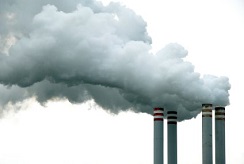
EPA issues new air quality standards for fine particulate matter (PM), based on scientific findings by EPA, research grantees and others that the air pollutant is harmful to public health. Research on PM by EPA and grantees over the years has found the pollutant has adverse effects on the lungs and cardiovascular system. The science has supported the congressionally mandated review of the PM standards to protect public health.
EPA's Particulate Matter (PM) Pollution Resources
1994 - EPA Develops Radon Mitigation Technology
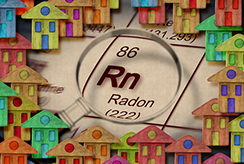
Radon is a cancer-causing radioactive gas found naturally in the environment. It comes from the natural decay of uranium that is found in nearly all soils. It typically moves up through the ground to the air above and into homes and other buildings through cracks and other holes in the foundation. Radon mitigation technology developed by EPA researchers has been installed in over 300,000 homes, preventing an estimated 100 premature lung cancer deaths.
1992 - EPA Conducts Health Risk Assessment on Passive Smoke Effects

EPA completes its risk assessment on the respiratory health effects of passive smoking. The report concludes that exposure to environmental, or secondhand, tobacco smoke is responsible for approximately 3,000 lung cancer deaths each year in nonsmoking adults and impairs the respiratory health of hundreds of thousands of children. The risk assessment provides the scientific basis for EPA to declare secondhand smoke as a carcinogen.
The Respiratory Health Effects of Passive Smoking: Lung Cancer and Other Disorders
1992 - EPA Identifies Alternatives for Chlorofluorocarbons and Hydrochlorofluorocarbons
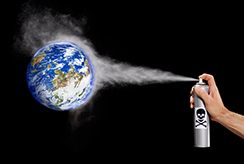
EPA research identifies alternatives for chlorofluorocarbons and hydrochlorofluorocarbons, both classes of stratospheric ozone depleting substances that resulted in the so-called ozone hole. The alternatives are evaluated for their ability to maintain engineering performance while reducing risk to stratospheric ozone and global climate change.
1980s
1988 - EPA Studies Effects of Ozone Exposure on Lungs

EPA begins research that demonstrates prolonged exposure during exercise to ozone results in lung function decrements, respiratory cell damage, respiratory tract inflammation, and respiratory symptoms at low levels. The findings formed the basis for revisions of the National Ambient Air Quality Standard (NAAQS) for ozone. Ozone research by EPA and grantees has made significant contributions to the Congressionally mandated reviews of the ozone standard over the years that have protected public health.
Research on Health and Environmental Effects of Air Quality
1988 - Research on Nitrogen Oxides Leads to Cleaner Emission Standards
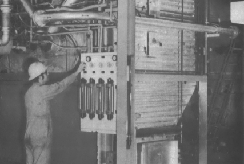
EPA research uncovers the mechanisms responsible for formation of nitrogen oxides (NOx) from fuel-bound nitrogen in coal. This discovery allows the development of low-NOx burners that enable more protective emission standards for coal-fired boilers under the Clean Air Act Amendments of 1990.
EPA's Clean Air Markets resources
1970s
1979 - EPA Outlines the Environmental Concerns of Acid Rain

EPA releases a research summary outlining the environmental concerns of acid rain in lakes and rivers, caused by emissions of sulfur dioxide and nitrogen oxides. The research to monitor impacts, study the health effects on aquatic life and understand atmospheric processes were crucial to support the 1990 Acid Rain Program established by Congress to reduce emissions impacting aquatic life and ecosystems.
EPA's Research Summary on Acid Rain
1975 - EPA Research on Lime Scrubbing Leads to Lower Sulfur Dioxide Emissions
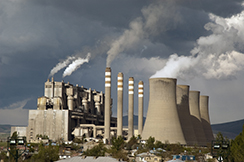
The National Research Council notes that EPA research has cast important new light on the chemistry of lime scrubbing, setting the stage for successful commercial development of sulfur dioxide scrubbers for coal-fired power plants. The research leads to lower emissions of the air pollutant.
Report on the Status of Lime/Limestone Wet Scrubbing Systems
